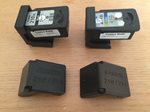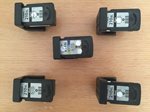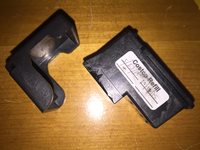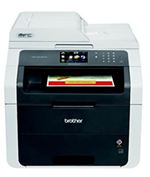
As reluctant as I was to change something out as solid and dependable as my trusty Canon inkjet printer, it seemed like the next natural step in the evolution of my office printing needs. Being my first wireless printing unit with a built-in fax, scanner, and copier, it truly served every need I had for my small one-truck operation for all those years. What I underestimated, as most often do I assume, is that with double the trucks I quickly inherited double the paperwork! More often than not, things like printers are only replaced when they fail and the option to replace is cheaper than that involved in repair of the original. My choice to upgrade was strictly due to workload and the cost associated with the new increased printing volume that I now was responsible for.

As inkjets go, I think I picked the most dependable workhorse I have ever encountered. Through the years I was able to print thousands of pages, pictures, brochures, and cards without a single hassle other than the occasional double-fed paper from the blank paper feed tray. The clarity I had was outstanding and the wireless feature to print over Wi-Fi made it easy to print from anywhere in the house. Over time I was even able to lower my ink costs by refilling the spent ink cartridges at our local Costco(See recent blog:
Cost Effective Business Printing).

The only downfall was now that I had been experiencing double the page printing, I was noticing the fact that I would have to change cartridges every other week or so, alternating back and forth from tri-color to black. Even with the reduced ink costs from refilling, it was time to start thinking about the speed at which pages would print and the hassle of changing out cartridges all the time.

Although a good inkjet can be purchased easily from around $75 to upwards of $200, the ink cartridges can be quite costly for many models. My inkjet cartridges could typically be found for around $40-$50 and included one tri-color and one black cartridge. Being that I could run into a change of these cartridges every 350-400, or every other week, it could mean over $400 per year for ink. Not to mention that I would often run through black cartridges 2 to 1 for every color cartridge I would use. As my volume increased, so did my impatience for waiting on printer itself to print out page after page at its own sluggish pace. Sometimes I would have five or six small jobs in the print queue while it was still trying to spit out its first complete print job.

Switching to an LED-laser printer “all-in-one” would be the next logical evolution in my printing revolution. Not only did it offer the speed of being able to spit out 19 pages per minute in full color, but it also offered actual reductions in my cost-per-page comparison. Having four separate inexpensive toners that could last over 2,000+ prints per cartridge in a high-yield format and an imaging drum that was rated at 15,000+ pages before needing replacement, it seemed like a no-brainer at an initial investment of only $289.99. This will not only save me from the hassle of changing out ink on a regular basis, it will also make up the initial cost of the printer itself in a very short window of time.
Sometimes we plan on making tech upgrades for convenience or because of a good deal. Other times it seems as though the tech upgrades are a change ordered by changes in other parts of our business and are more so done out of sheer necessity. I would bet that most people really don’t give too much thought about increased paperwork as a result of an expansion, or at least I really never did at a level of cost and speed. An inkjet can be a great way to start a business in a home office as I did, but when the home office becomes a true corporate office, you may just find yourself having to upgrade your printer to keep up with your needs. Be sure when it is time to upgrade to do your homework, as not all laser printers are the same! Be weary of printers that offer lower initial investment but offer high toner cost and low page yield before toner replacement. Check reviews and ask around for what other people are using as well. As with any new technology purchase, be sure you are investing in the best piece of equipment for your particular needs!